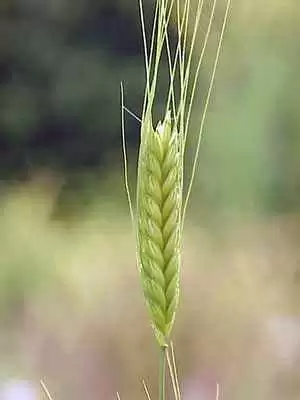
Celiac.com 03/25/2021 - Sometimes, studies can surface that create the appearance of a monumental revelation, but in reality, there isn't much to support their claims. The latest example is an article based on a recent study that appears in Foods magazine.
Wheat farmers are using increasing amounts of nitrogen on their fields, which may be stoking the global increase in cases of celiac disease, according to a study published in the Foods magazine, and led by Josep Peñuelas, a researcher at CREAF and the CSIC.
Celiac.com Sponsor (A12):
The study makes some sweeping conclusions that will likely raise some eyebrows. But at the end of the day, it's long on generalizations and thin on data, and facts.
Beginning with little perspective on historical versus modern usage levels, or actual physical impacts, Peñuelas points out that wheat farmers today use ten times more nitrogen to fertilize wheat crops than in the 1960s.
Peñuelas points out that celiac rates in the US went from 0.2 to 1% over the last 25 years. However, there are likely many reasons for this, and ascribing the cause to increased nitrogen use seems far fetched. Even ascribing the cause to increased wheat consumption seems a stretch. Because celiac disease testing and awareness have increased substantially over the last couple of decades, it's difficult to get a handle on exactly how widespread the problem is, though evidence points to new rates outpacing increases from testing alone.
He then makes some sweeping conclusions. "Nitrogen fertilization translates into a possible direct global health problem," says Peñuelas, although he is cautious about drawing conclusions and admits that very little study has been done in this area.
Peñuelas admits that his team did not "carry out the medical study, but we warn of a new consequence. The relationship that we have identified does not imply the existence of a single direct cause: there may be other factors, although this is important."
He adds that "the nitrogen fertilization that we ecologists study has very relevant effects on microorganisms and the functioning of the earth, and we add that it also has an effect on human health."
This may be true, but the fact is that the actual chemical, biological and environmental triggers that cause the development of celiac disease in genetically susceptible people remain largely unknown. As do the causes of the genetic propensity for celiac disease.
Moreover, the level of genetic susceptibility in the general population remains largely unknown, especially relative to previous eras.
Overall, the study, while perhaps well intended, seems thin on detail and long on generalizations and claims that are not based on data and solid science.
Peñuelas makes a lot of general claims about nitrogen use on wheat fields, increased planting and consumption of wheat, and rises in celiac disease to make some equally general claim that rising nitrogen use has something to do with it all, and possibly other problems.
He states: "Everything suggests that we have another risk factor caused by a world richer in nitrogen through the increase of gliadins in wheat, an important risk factor that may explain, at least in part, the increase in the prevalence of celiac disease."
"Everything" suggests? Really? Surely if "everything" points to wheat as "another risk factor caused by a world richer in nitrogen through the increase of gliadins in wheat," then surely there's good data to support that claim? But the study offers none. How about let's see some data from an actual scientific study that does more than make some blanket associations about wheat and nitrogen and celiac disease?
With all respect to Peñuelas and Foods magazine, these types of claims are unsupported by any hard data, and questionable in their conclusions.
Here are some questions that go unanswered: Are wheat farmers dumping more fertilizer on their crops than ever before, or has wheat cultivation expanded ten times in the last 50 years or so? Is there any hard evidence that elevated nitrogen use impacts the physical qualities of wheat, especially the gliadins that trigger celiac reactions? Are there other plausible explanations for a rise in celiac disease rates, such as NSAID use, or dietary shifts?
The data so far discounts the idea that wheat, even hybridized varieties common today, are really that much different, or more likely to trigger celiac disease or gluten intolerance than in the past.
The reason it's important to clarify such studies is because they can promote misinformation about topics that really matter.
Modern wheat is not more toxic than historical varieties
This claim is similar to claims that modern wheat is more "toxic" to people with celiac disease than historical varieties, or more likely to trigger the development of celiac disease, neither of which have been shown to be true. In fact, a recent study suggests no connection between celiac antigenicity and modern wheat strains.
In fact, both ancient and modern wheat strains trigger reactions in people with celiac disease, and may contribute to its development.
Rain levels change gliadin levels more than hybridization
Sometimes actual data can yield surprising results. Not too long ago, anew study on old and new wheat varieties shows no evidence for higher immunoreactivity in hybridized wheat strains. In fact, they found that rain changes immunoreactivity of wheat proteins even more than breeding. Think about that: Rain levels change gliadin levels much more than selective breeding.
In general, be skeptical of simple answers to complex problems, especially without good detail in the form of data. Demanding good science, solid data, and supportable conclusions will help people avoid reaching the wrong conclusions about important issues.








Recommended Comments
Create an account or sign in to comment
You need to be a member in order to leave a comment
Create an account
Sign up for a new account in our community. It's easy!
Register a new accountSign in
Already have an account? Sign in here.
Sign In Now